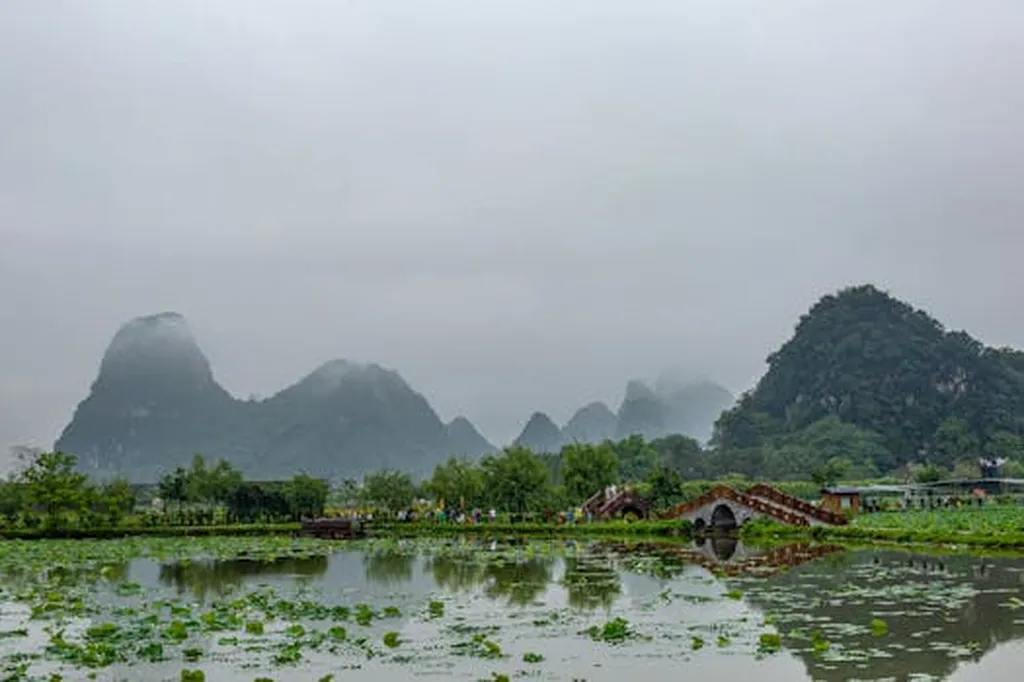In the rugged landscapes of southern China, where peak cluster depressions dominate the terrain, a novel approach to environmental management is emerging, one that could reshape how we think about water resources and land use in karst regions worldwide. This approach, known as Low Impact Development (LID) based on the regulation of the epikarst zone, is gaining traction as a solution to the unique challenges posed by karst environments. The research, led by Guanghui Jiang of the Institute of Karst Geology, CAGS/Key Laboratory of Karst Dynamics, MNR&GZAR in Guilin, Guangxi, offers a promising path forward for these fragile ecosystems.
Karst landscapes, characterized by their soluble rock formations, are notorious for their environmental fragility. “Most of the bare karst areas in southern China face severe issues like rocky desertification, floods, water shortages, and pollution,” Jiang explains. The rapid drainage through subterranean river networks leaves the surface environment parched and vulnerable. Traditional development practices have often exacerbated these problems, but the introduction of LID offers a glimmer of hope.
The epikarst zone, a highly karstified layer near the surface, plays a crucial role in this new approach. This zone acts as a natural water storage and regulation system, with its high hydraulic conductivity and numerous small caves. By leveraging this natural infrastructure, LID aims to promote sustainable water resource utilization and reduce environmental degradation.
Jiang’s research highlights three key areas of focus within karst dolines: sloping farmland, epikarst springs, and sinkholes. Each area presents unique challenges and opportunities. For sloping farmland, the goal is to minimize water consumption and prevent soil erosion through techniques like terraced fields and straw mulching. Epikarst springs, vital for drinking water, require rainwater harvesting and protection measures. Sinkholes, which can serve as entry points for contaminants, need buffer zones and filtration systems to safeguard groundwater quality.
The LID model proposed by Jiang and his team is not just a theoretical concept; it has been tested and refined in the rocky desertification regions of South China. The model emphasizes the importance of preserving water resources in woodland areas at the top of peaks and creating buffer zones in intensively used areas at the bottom of dolines. By doing so, it aims to enhance infiltration, promote natural purification, and ensure the safety of water sources.
The implications of this research extend far beyond southern China. Karst regions in Southeast Asia and other parts of the world could benefit from this innovative approach. “Although LID based on epikarst is raised from the rocky desertification control in southern China, it could be possibly extend to the karst areas in other regions such as Southeast Asia, where peak-cluster is also well developed,” Jiang notes.
For the energy sector, the potential commercial impacts are significant. Sustainable water management is crucial for energy production, particularly in regions where water scarcity is a growing concern. By adopting LID practices, energy companies can reduce their environmental footprint, ensure a stable water supply for their operations, and contribute to the revitalization of rural areas.
The research, published in the journal Carsologica Sinica (which translates to “Chinese Journal of Speleology”), represents a significant step forward in the field of karst environmental management. As the world grapples with the challenges of climate change and environmental degradation, innovative solutions like LID based on the epikarst zone offer a beacon of hope. By learning from the experiences in southern China, other regions can pave the way for a more sustainable future.
In the words of Guanghui Jiang, “The concept and technology of LID in view of urban facilities will give guidance for the construction of a holistic environmental remediation project in a rural area, including water resources storage, pollutant treatment, and land restoration for rocky desertification. It is very helpful to promote rural revitalization in the remote and fragile ecological environment area of karst rocky mountains.” This vision of rural revitalization and environmental sustainability is one that resonates far and wide, offering a blueprint for a more resilient and prosperous future.

